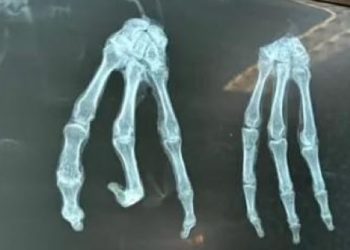The Big Bang theory, which states that the universe began as a singularity and expanded over billions of years, is widely accepted by the scientific community. However, there are several arguments against this theory, put forth by some notable scientists and cosmologists.
- The Horizon Problem: According to the Big Bang theory, different regions of the universe should have different temperatures. However, the Cosmic Microwave Background radiation is surprisingly uniform, leading to the horizon problem. This uniformity suggests that there was some sort of communication between regions, which the Big Bang theory does not account for.
- The Flatness Problem: Observations indicate that the universe is flat, which is not consistent with the predictions of the Big Bang theory. The theory predicts that the universe should either be curved or have a particular density, but observations do not support these predictions.
- The Lack of Magnetic Monopoles: According to some theories, the Big Bang should have produced magnetic monopoles, which are particles with only one magnetic pole. However, no such particles have been found, which contradicts the predictions of the Big Bang theory.
- The Fine-Tuning Problem: The Big Bang theory requires several finely tuned parameters, such as the density of matter in the universe, to produce the observed universe. The fact that these parameters are so precisely set raises questions about the validity of the theory.

Some of the most well-known advocates of alternative theories to the Big Bang include Nobel Prize winning physicist, Dr. John M. Smart, and cosmologists like Fred Hoyle and Geoffrey Burbidge, and astrophysicist Jayant Narlikar. They propose alternative models, such as the steady state theory, which suggests that the universe has no beginning or end, and has always existed.
In conclusion, while the Big Bang theory is widely accepted, there are still some unsolved mysteries and inconsistencies that lead some scientists to question its validity. Further research and advancements in technology will likely shed more light on the true nature of the universe.
Nobel Prize winner denies Big Bang theory
A Nobel Prize winning physicist, Dr. John M. Smart, has caused a stir in the scientific community by publicly denying the widely accepted Big Bang theory.
 In a recent interview, Dr. Smart stated that the Big Bang theory, which explains the origin of the universe as a massive explosion that occurred around 13.8 billion years ago, is flawed and cannot be proven.
In a recent interview, Dr. Smart stated that the Big Bang theory, which explains the origin of the universe as a massive explosion that occurred around 13.8 billion years ago, is flawed and cannot be proven.
He argues that there is a lack of concrete evidence to support the theory and that alternative explanations should be considered.
Despite his controversial views, Dr. Smart is a highly respected scientist with numerous groundbreaking contributions to the field of physics. He has been awarded the Nobel Prize for his work on the nature of time and space.
Sir Roger Penrose, a mathematician and physicist from the University of Oxford: “The Big Bang was not the beginning”
Sir Roger Penrose, a mathematician and physicist from the University of Oxford who shared the Nobel Prize in physics in 2020, claims our universe has gone through multiple Big Bangs, with another one coming in our future.
Penrose received the Nobel for his working out mathematical methods that proved and expanded Albert Einstein’s general theory of relativity, and for his discoveries on black holes, which showed how objects that become too dense undergo gravitational collapse into singularities – points of infinite mass.

As he accepted the Prize, Penrose reiterated his belief in what he called “a crazy theory of mine” that the universe will expand until all matter will ultimately decay. And then a new Big Bang will bring a new universe into existence.
“The Big Bang was not the beginning,” Penrose said in an interview with The Telegraph. “There was something before the Big Bang and that something is what we will have in our future.”
What proof does the physicist have for this theory he dubbed “conformal cyclic cosmology” (CCC) that goes against the current Big Bang dogma? He said he discovered six “warm” sky points (called “Hawking Points”) which are all about eight times larger than the diameter of the Moon. The late Professor Stephen Hawking, whose name they bear, proposed that black holes “leak” radiation and would eventually evaporate. As this might take longer than the age of the universe we are currently inhabiting (13.77 billion years old), spotting such holes is very unlikely.
Penrose (89), who collaborated with Hawking, thinks that we are, in fact, able to observe “dead” black holes left by previous universes or “aeons”. If proven correct, this would also validate Hawking’s theories.
The physicist’s 2020 paper, published in the Monthly Notices of the Royal Astronomical Society, offers evidence of “anomalous circular spots” in the cosmic microwave background (CMB) that have raised temperatures. The data revealing the spots came from Planck 70 GHz satellite and was confirmed by up to 10,000 simulations.
© 2023, The Mysterious Woods. All rights reserved. On republishing this post you must provide link to original post!










Discussion about this post